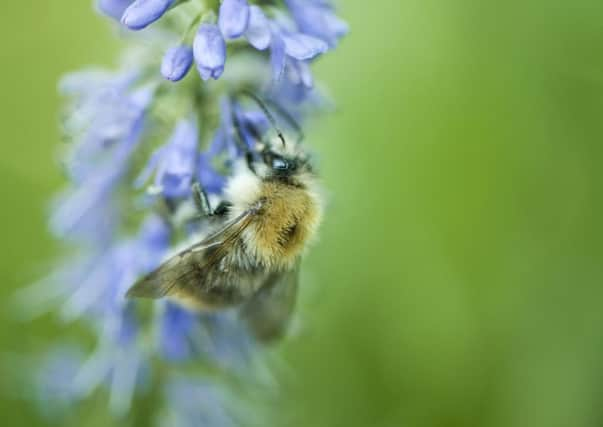Ilona Amos: Help save the UK's native honey bees


The bad news, as most of us are aware, is that populations of important creatures such as bees are in decline across the world. Experts blame a range of factors – loss of habitat due to the increasing spread of farming and other human activities, parasites and diseases and the impact of toxic pesticides.
The good news is people seem determined to do something about it. An increase in public awareness about the importance of bees and the threats to their survival has sparked a growing movement aimed at saving them – from campaigns to ban harmful neonicotinoid insecticides to tips on how to revive crashed bumblebees and an upsurge in beekeeping.
Advertisement
Hide AdAdvertisement
Hide AdThe honey bee is one of only a few ‘domesticated’ insects and we’ve been keeping them for millennia. The earliest evidence of apiculture suggests people in north Africa were keeping bees in pottery vessels 9,000 years ago.
We have only one native honey bee in the UK – Apis melifera melifera, or European dark bee. Sadly it is at serious risk of vanishing in the wild. Part of the problem stems from the successful revival of beekeeping, which generally relies on colonies imported from abroad. These alien insects easily cross-breed with the natives, diluting the gene pool. Meanwhile, the parasitic Varroa mite – thought to have arrived here with imported bees in 1992 – has been devastating colonies.
Luckily, though, there are moves afoot to reverse the fortunes of our home-grown stock.
The UK’s first sanctuary for native honey bees was established in Scotland in 2013, when ministers granted a special designation banning other species from being kept on the islands of Colonsay and Oronsay – the rare pure-bred population is protected through its isolation from the mainland.
And a new organisation, the Scottish Native Honey Bee Society, has also recently been set up to protect the species. Members have recently launched a major campaign that includes a nationwide survey and genetic testing to establish how many pure-bred insects are left.
On top of that, Newbattle Beekeeping Association is this weekend opening the country’s first ever bee academy, with around 15 students due to take lessons at its new apiary on the outskirts of Edinburgh.
Unfortunately, early indications suggest a lower than average winter survival rate for honey bees this year. Last year’s cold spring and summer are thought to be partly to blame.
Since this coming Sunday is World Bee Day, it’s a good time to think about what ordinary folk can do to help honey bees. Even if you’re not ready to start your own hive, the British Beekeepers Association recommends a list of plants that can be grown in even the smallest gardens – these include lavender, snowdrop, crocus, sedum, hellebore and cosmos. Fruit trees and those with blossom are also good.
Advertisement
Hide AdAdvertisement
Hide AdAccording to Planting for Honeybees author Sarah Wyndham Lewis, rowan is the best tree for bees in Scotland. They also love heather, which flowers in every season except winter, and gorse, which provides pollen and nectar.
So let’s do what we can for honey bees. Bear in mind what they do for us in the UK – pollinating 70 varieties of crop and making more than 6,000 tonnes of honey each year.